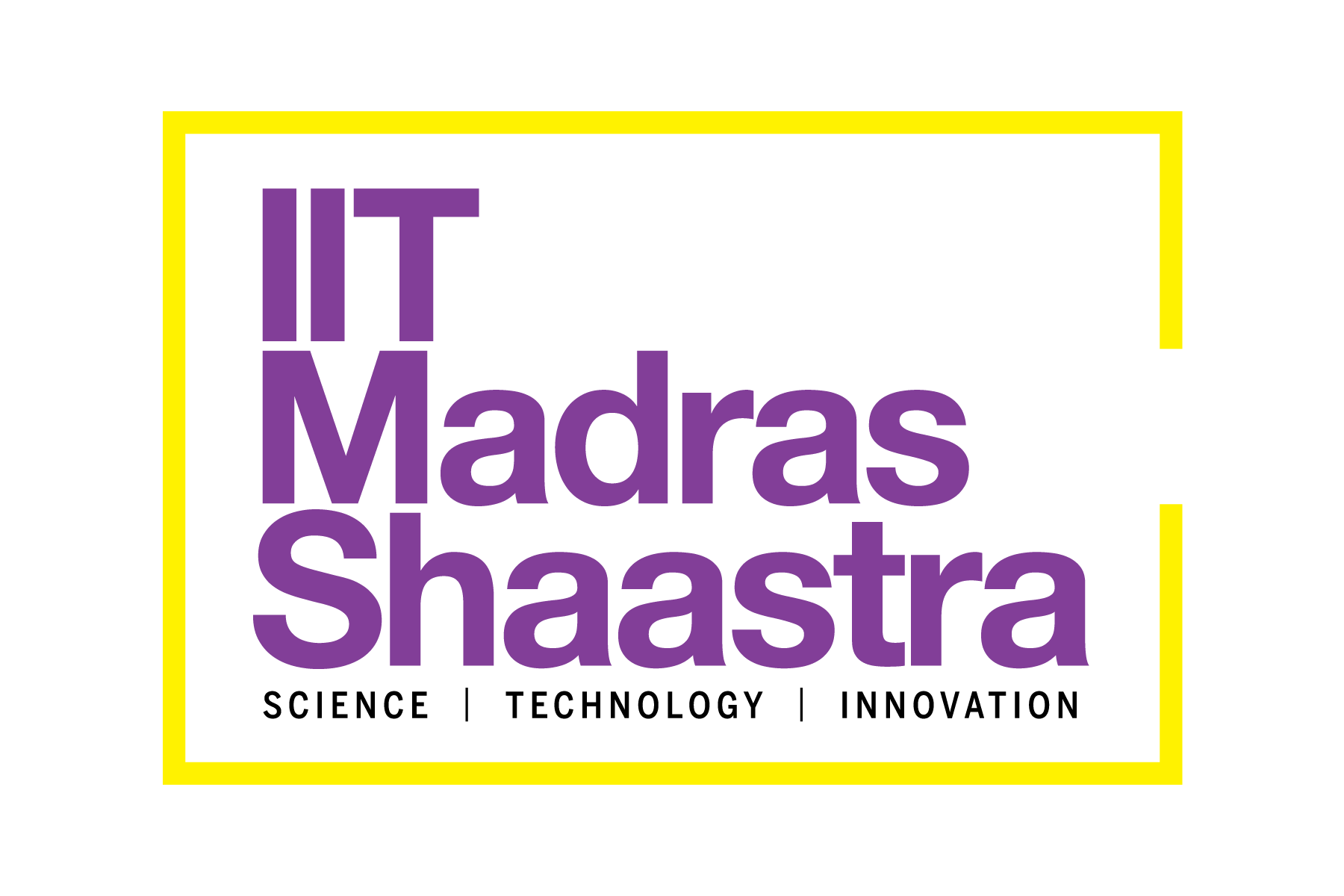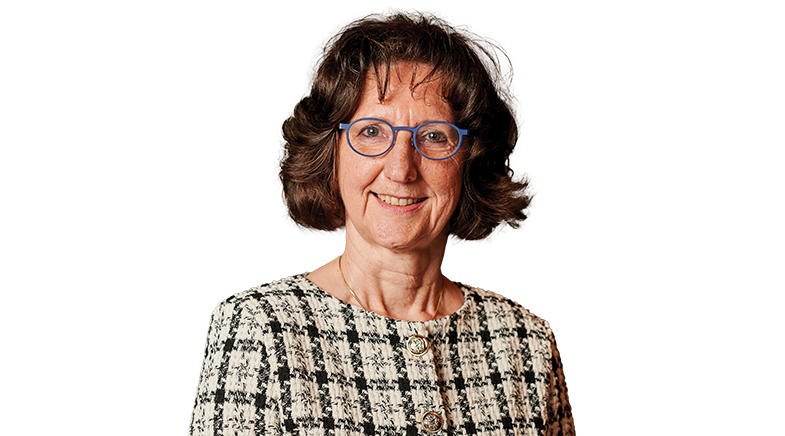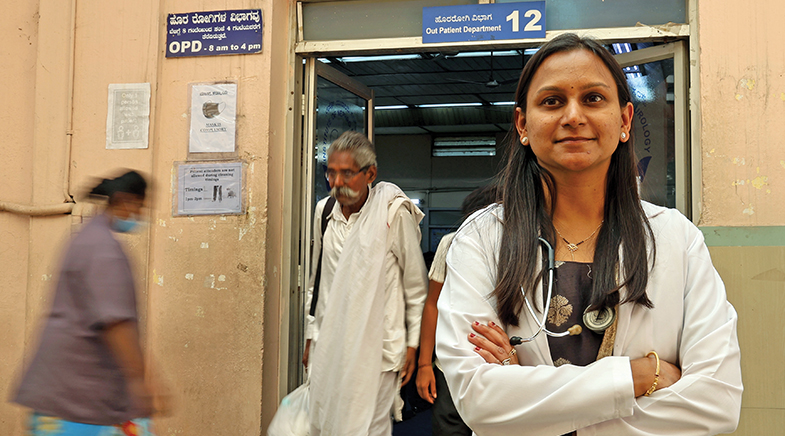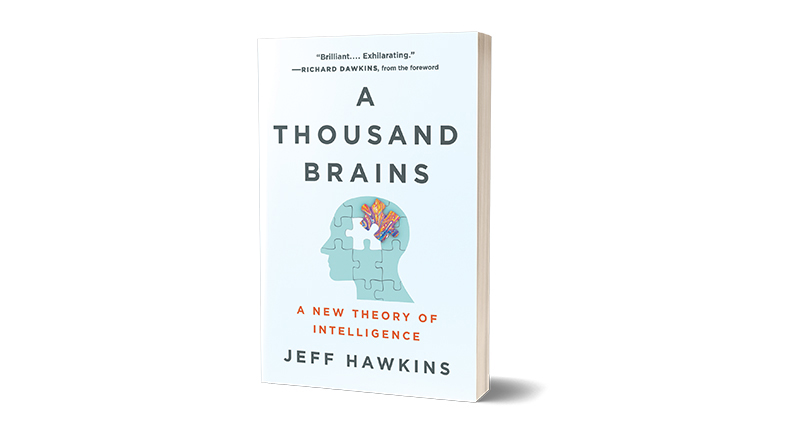Green, screen & clean
-
- from Shaastra :: vol 04 issue 09 :: Oct 2025

AI-ML saves water, and aids farmers and viewers.
FLUXGEN SUSTAINABLE TECHNOLOGIES
Founder: Ganesh Shankar
Year: 2021
Big idea: Using digitised water infrastructure to facilitate smart water consumption
Growing up in Bengaluru, Ganesh Shankar was fascinated by its lakes and water bodies. Concerned over the shrinking of water bodies, he participated in campaigns to protect them. Saving water has become the mainstay of his work, too: his four-year-old venture helps companies conserve water.
After a Bachelor's in Telecommunication Engineering from the RV College of Engineering and a Master's in Electronics from the Indian Institute of Science, Shankar founded a start-up on solar assets. He sold the venture, and used part of the proceeds to start FluxGen Sustainable Technologies, a software as a service (Saas) platform that works with industries to measure, analyse, and reduce water consumption and waste. FluxGen has more than 100 industrial clients, he says.

The start-up utilises the water data generated by companies to build solutions, and implements interventions on the platform to make water usage more efficient. Data on water quality, flow, level, or energy consumption within a facility can be analysed to pinpoint leakages, wastage, and excessive usage, Shankar says. Most companies have installed meters in their water infrastructure to monitor flow, quality, and level in sumps and overhead tanks. Moreover, regulations on water usage and recycling are becoming more stringent, and enforcement has become stricter.

A factory that needs to reduce water consumption must measure consumption. Most factories manually read water meters, which is a cumbersome process. FluxGen digitises the data collection and puts it in the cloud to analyse patterns. The company's Internet of Things (IoT) devices collect and store the data in the cloud. Machine learning algorithms and generative artificial intelligence are run on specially manufactured sensors. "It (FluxGen) uses the data of all the sensors. We use satellite data and track surface water levels," says Shankar.
The company has developed a dashboard that helps a facility manager to take corrective action using prescriptive alerts. The company provides its customers with insights into the water risk expected over the coming week. To achieve this, the technology must consider various parameters, including the groundwater table, water storage within the facility, usage, demand, supply, and the potential for rainfall. It assesses whether there are other users for the water source — such as nearby factories or large commercial buildings — that the facility is dependent on. It looks for depletion of any source, and examines if there is any contamination of the source. "We have built such a platform, and it has helped our customers. We have helped save billions of litres of water," Shankar says.
GREEN COLLAR AGRITECH SOLUTIONS
Founders: Padmini Sampath, Hema Annamalai and Sarangan Valavan
Year: 2022
Big idea: Using AI/ML to help assess the quality of spices in real time
With years of experience in the semiconductor industry, Padmini Sampath wanted to bring the latest technology to agriculture — and sought to improve the profitability of small and marginal farmers with serial entrepreneur Hema Annamalai, a former engineering batchmate at the Government College of Technology, Coimbatore. Their consultations with farmers revealed that commodity pricing was driven by market prices, rather than being determined by the quality of the product.
To help farmers assess the quality of their produce, they set up Green Collar Agritech Solutions. Sampath convinced Sarangan Valavan, an engineering graduate from the National Institute of Technology Tiruchirappalli, to join them. They went on to develop an artificial intelligence-powered solution to assess the quality of agricultural produce in real time, at points of procurement or farm gates.

Green Collar's debut product, TARAM, which in Tamil means 'quality', is a handheld, battery-powered device that utilises Near-Infrared (NIR) spectroscopy to assess the chemical ingredient-based quality of spices. The first spice that they worked on was turmeric. TARAM for turmeric was launched in November 2024.

According to Sampath, the turmeric farmers they consulted were mostly unaware of how quality could positively impact the price they got. Sellers and buyers tend to focus solely on the physical parameters of turmeric when determining the price. The quality of turmeric, however, is determined by the concentration of curcumin and oil content, which impart flavour and colour to the spice. For assessing quality, samples are typically sent to a laboratory, a process that is both expensive and time-consuming. TARAM, powered by machine learning algorithms for each parameter and commodity, makes quality assessment available at the mandi itself.
When the TARAM device is used to scan a sample from a turmeric consignment, it converts the NIR signals into ones and zeroes, which the proprietary ML algorithms then convert into quality readings — specifically, the percentage of curcumin, moisture, starch, and oil. The test gives its report within two minutes, says Sampath. They have trained TARAM for turmeric and pepper and are working on other spice commodities.
The device is offered through three models: pay-per-test, subscriptions, and sale. The company is working on using the device to detect adulterants. Green Collar has another product, TARAM-IQ, a data analytics intelligence portal that provides commodity analytics with descriptive quality (as assessed by TARAM) and quantity information.
NEURALGARAGE
Founders: Mandar Natekar, Subhabrata Debnath, Anjan Banerjee and Subhashish Saha
Year: 2021
Big idea: Using Generative AI to visually dub content in different languages
Dubbed films can be jarring when dialogue and facial expressions are out of sync. Bengaluru-based NeuralGarage has been trying to match the two. Its first product, VisualDub, is a video-based generative artificial intelligence (AI) technology that creates studio-quality lip syncing, using audio as a controller. NeuralGarage has used this technology in several advertisements and is targeting the film industry.

Three of its four founders — Subhabrata Debnath, Anjan Banerjee and Subhashish Saha — met at the Indian Institute of Technology Kanpur while doing their Master's in Computer Science. The idea to start a venture on dubbing took shape during the COVID-19 years, when they were confined to their homes. Banerjee would watch films and television shows, particularly Korean programmes, dubbed into English. The three wondered if they could work on improving the quality of dubbing. They consulted Mandar Natekar, a media professional with over two decades of experience in the media and entertainment industry. Natekar went on to join them as a co-founder of their venture.
Debnath points out that dubbed content often does not provide the viewer with an authentic cinematic experience due to discrepancies between lip movements and the spoken word and facial expressions. They used audio as the controller to address this problem. When a person speaks, multiple facial features move — the lips, mouth, neck, muscles near the eyes and even the eyebrows. He says that NeuralGarage has trained its machine learning model to use all these features to come up with a visual dubbing tool.
PHOTO: BY SPECIAL ARRANGEMENT

(From left) Subhashish Saha, Anjan Banerjee, Subhabrata Debnath and Mandar Natekar.
When artistes voice for an actor or actress, they often cannot match the facial expressions of the performers with the dubbed titles. "We use AI to fill the gaps so that the entire outcome improves," he says. All actors, he says, have distinct styles, including unique facial expressions, which should be retained. NeuralGarage's technology is built with these factors in mind.
NeuralGarage's algorithm deals with the speaking style, which is determined not so much by the language as by how the vocal cords move and how the lips vibrate when producing sound. The algorithm relies on a concept called phoneme viseme, where viseme refers to the lip shape and phoneme refers to the sound base. NeuralGarage currently conducts visual dubbing for its clients but will consider selling the method as software in the future.
Have a
story idea?
Tell us.
Do you have a recent research paper or an idea for a science/technology-themed article that you'd like to tell us about?
GET IN TOUCH














